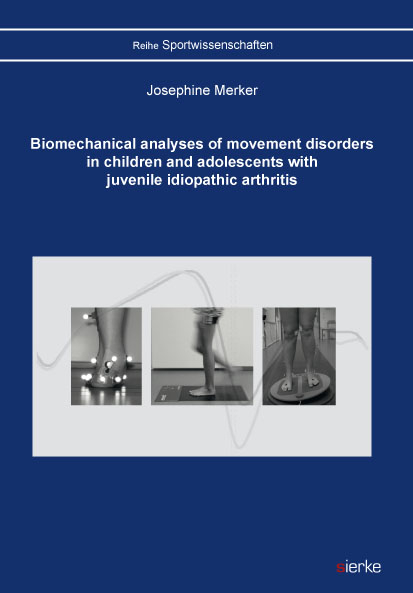
Biomechanical analyses of movement disorders in children and adolescents with juvenile idiopathic arthritis
Seiten
2018
sierke VERLAG - Sierke WWS GmbH
9783868449969 (ISBN)
sierke VERLAG - Sierke WWS GmbH
9783868449969 (ISBN)
- Titel ist leider vergriffen;
keine Neuauflage - Artikel merken
Juvenile idiopathic arthritis (JIA) is the most common rheumatic disease of
childhood. The consequences of an active disease are swollen and painful
joints, which could provoke long-lasting functional limitations and physical
inactivity of JIA patients. The general aim of therapy is to identify dysfunctions
at an early state to prevent fixed deformities and to help affected
children returning to normal and age-appropriated functional capacity. Established
biomechanical methods are used to objectively identify functional
deficits in everyday activities of JIA patients. Motion analyses were done
in 133 JIA-affected children and adolescents in upright standing, stance
phase of walking and postural instability conditions. In the three studies
included, a patient group with the same affected lower limb joint pattern,
a patient group with a fixed pes planovalgus deformity and a patient group
with active and formerly active (inactive) lower limb disease were evaluated.
The results of three-dimensional gait analyses and pedobarography
of the first two studies demonstrated significant impairments in walking,
whereas balance assessments of the third study revealed excellent skills
of JIA patients compared to healthy control children. Functional analyses
can contribute to clinical routine outcome measures and should enhance
individual treatment and physical activity promotion. Therefore, an individual
physical activity and sports promotion concept has been developed.
childhood. The consequences of an active disease are swollen and painful
joints, which could provoke long-lasting functional limitations and physical
inactivity of JIA patients. The general aim of therapy is to identify dysfunctions
at an early state to prevent fixed deformities and to help affected
children returning to normal and age-appropriated functional capacity. Established
biomechanical methods are used to objectively identify functional
deficits in everyday activities of JIA patients. Motion analyses were done
in 133 JIA-affected children and adolescents in upright standing, stance
phase of walking and postural instability conditions. In the three studies
included, a patient group with the same affected lower limb joint pattern,
a patient group with a fixed pes planovalgus deformity and a patient group
with active and formerly active (inactive) lower limb disease were evaluated.
The results of three-dimensional gait analyses and pedobarography
of the first two studies demonstrated significant impairments in walking,
whereas balance assessments of the third study revealed excellent skills
of JIA patients compared to healthy control children. Functional analyses
can contribute to clinical routine outcome measures and should enhance
individual treatment and physical activity promotion. Therefore, an individual
physical activity and sports promotion concept has been developed.
| Erscheinungsdatum | 21.11.2018 |
|---|---|
| Sprache | englisch |
| Maße | 148 x 210 mm |
| Gewicht | 185 g |
| Themenwelt | Medizin / Pharmazie ► Medizinische Fachgebiete ► Orthopädie |
| Studium ► 1. Studienabschnitt (Vorklinik) ► Physiologie | |
| Weitere Fachgebiete ► Sportwissenschaft | |
| Schlagworte | Bewegungsanalyse • Biomechanik • Fußdruckanalyse • Ganganalyse • Gleichgewichtsanalyse • Haltungsanalyse • Kinder mit chronischen Erkrankungen (Rheuma) • Sportberatung |
| ISBN-13 | 9783868449969 / 9783868449969 |
| Zustand | Neuware |
| Informationen gemäß Produktsicherheitsverordnung (GPSR) | |
| Haben Sie eine Frage zum Produkt? |
Mehr entdecken
aus dem Bereich
aus dem Bereich


